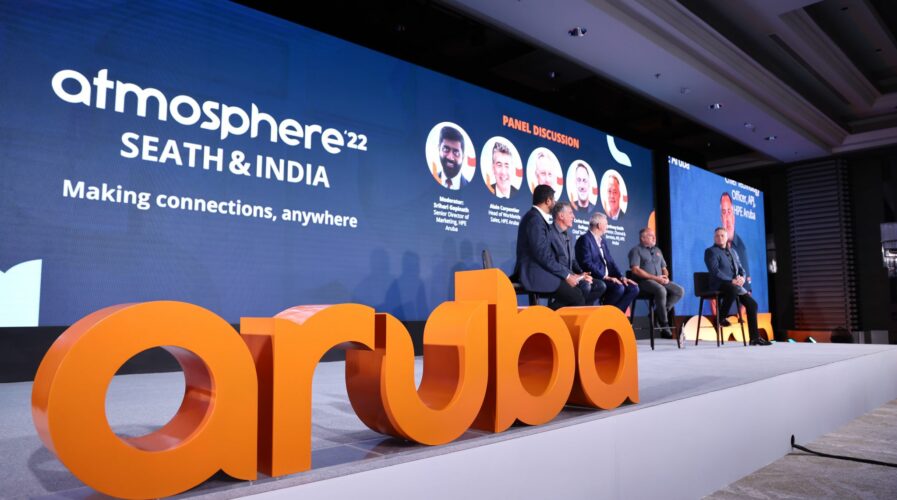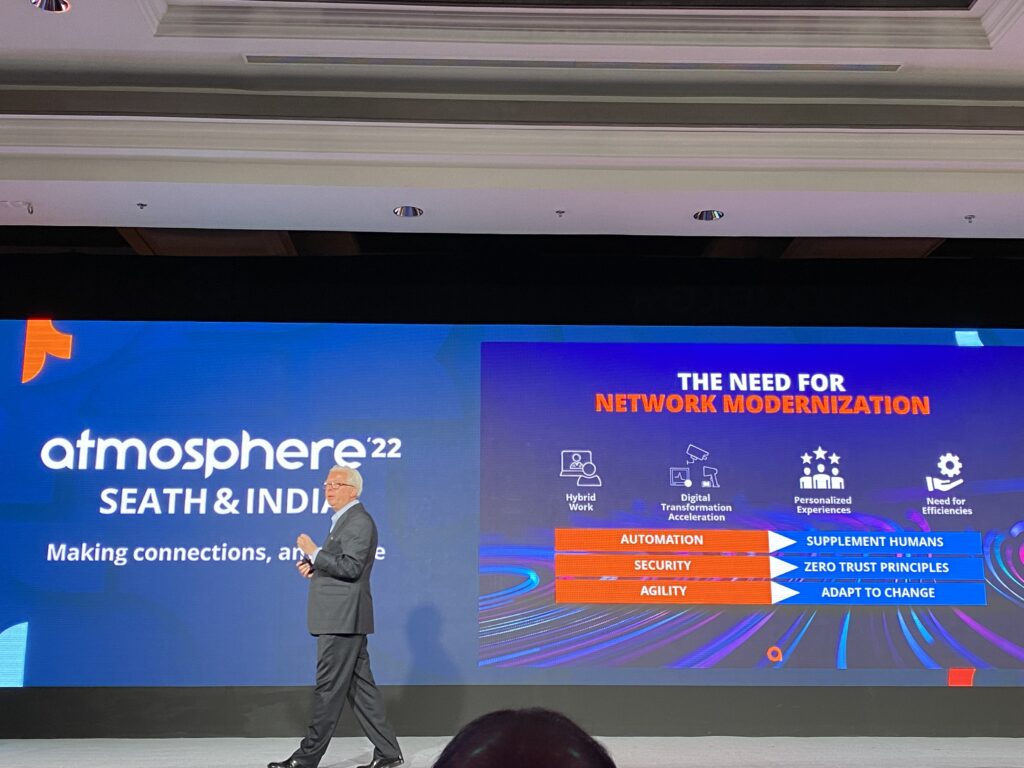
The need to modernize network is now, with everyone connected worldwide
- Aruba’s always-on innovations is centered around three fundamental technology principles: agility, automation, and security
- The first self-locating wireless infrastructure and the Open Locate project to standardize methods for exchanging location information
Any effort to implement digital transformation must first consider the network. The network must adapt architecturally and operationally as applications have grown in importance to business outcomes and as cloud and multicloud have altered the application environment – especially given how connected practically everyone in this world is.
According to Insider Intelligence, Southeast Asia alone will have the second-fastest growth in internet users globally in 2022, with an annual increase of 3.1%. The number of internet users will rise by 53.9 million since 2019, when 54.0% of the region’s population went online.
In his keynote address at the annual Aruba Atmosphere Conference – SEATH and India in Bangkok, Thailand, David Hughes, Chief Product and Technology Officer, HPE Aruba, said, “Networking is shifting from thinking about it as managing a whole set of devices, towards delivering a service to your users, and enabling business outcomes. When we consider how we can make your job easier, what do we consider? How can we help you in filling those deficits?”
The need for network modernization is what these challenges are accelerating. According to Hughes, “you need to modernize your network if you want to be nimble, if you want to be able to cope with the unexpected, and if you want to be able to see around those corners.”
How network modernization accelerates the sense of “connected”
The Aruba Atmosphere Conference this year has brought together business-driven organizations from the region to explore the greatest industry practices, foster insightful technical discussion, and sharpen new skills regarding the most recent updates that will aid in continuously modernizing their networks.
Key executives and industry experts discussed Aruba’s always-on innovations in a presentation centered around three fundamental technological principles: agility, automation, and security.
- Agility: Network-as-a-Service (NaaS) adoption is becoming more and more simple, enabling unified, cloud-native, standards-based architecture while optimizing financial and human resources.
- Automation: By achieving streamlined processes and AI-powered automation, networks that enable distant, branch, campus, and cloud connectivity may be planned, deployed, and managed with less time and effort.
- Security: Importance of enhanced threat detection and protection by applying built-in identity-based access control and dynamic segmentation, leveraging zero trust and SASE frameworks.
Static networks are no longer able to fulfil evolving security standards or keep up with expanding business demands. It is strongly advised that businesses establish a modern network architecture when they begin digital transformation activities and adjust to hybrid work environments. This enables businesses of all sizes to execute their main business processes from anywhere thanks to a smooth and secure connection.
Along with the global growth in as-a-service solutions and the rise of hybrid workplaces, HPE GreenLake for Aruba is revolutionizing how businesses operate. In order to stay up with the speed of business, HPE GreenLake keeps up with essential use cases including hybrid work, connected retail, and hybrid learning as well as enabling businesses to quickly deploy them.
Making connections anywhere, anytime has become more important than ever, and according to Steve Wood, Vice President of APJ at Aruba, “Enterprises that prioritize digital transformation and acceleration will be able to address the tough challenges that come with network orchestration, management, and security to eventually drive business growth.”

David Hughes, Chief Product and Technology Officer, HPE Aruba, presents on the need for network modernization.
Key Announcements on Aruba’s next generation networking devices
The transformation of WAN and security architectures with a unified Software-Defined Wide Area Network (SD-WAN) fabric, one that enables organizations to architect a Secure Access Service Edge (SASE), is also essential to delivering the highest quality of experience for customers, employees, and IT teams.
The Aruba EdgeConnect Enterprise SD-WAN platform most recently received the ICSA Labs Secure SD-WAN Certification, making it the first SD-WAN platform to do so. The accreditation highlights Aruba’s industry-leading SD-WAN and security capabilities, giving customers flexibility and assurance in implementing important network and security transformations.
Aruba expanded it further by launching the first self-locating wireless infrastructure and the Open Locate project to standardize methods for exchanging location information.
Mark Verbloot, Senior Director, Product, Solutions and Systems Engineering, APJ, HPE Aruba, claims that high precision GPS receivers have been incorporated inside all of Aruba’s new 600 series access points. Aruba’s announcement of this is not brand-new. They did, however, announced to enable the software to make use of these GPS receivers now.
“There’s two parts to this, the GPS receiver is used to automatically determine its absolute reference both in height as well as position and use that to automatically be positioned on a floor plan. In addition, we’ve got something called fine time measurement (FTM), or also known as IEEE 802.11mc. This is a standard where devices or clients can accurately measure their position from a fixed point, using time-of-flight measurement – basically measuring how long it takes to receive a signal or a ping from a known reference point,” explained Verbloot.
Together, these two components made up what Aruba referred to as “Open Locate.” Verbloot declared that Aruba will provide these to the entire industry. It is intended to allow them to advertise the exact location of the access point from the access point beacon. Therefore, any client can obtain that information and determine precise location, regardless of whether it supports FTM or not.
READ MORE
- 3 Steps to Successfully Automate Copilot for Microsoft 365 Implementation
- Trustworthy AI – the Promise of Enterprise-Friendly Generative Machine Learning with Dell and NVIDIA
- Strategies for Democratizing GenAI
- The criticality of endpoint management in cybersecurity and operations
- Ethical AI: The renewed importance of safeguarding data and customer privacy in Generative AI applications
